
Braunschweig or Brunswick is a city in Lower Saxony, Germany, north of the Harz Mountains at the farthest navigable point of the river Oker, which connects it to the North Sea via the rivers Aller and Weser. In 2016, it had a population of 250,704.

Salzgitter is an independent city in southeast Lower Saxony, Germany, located between Hildesheim and Braunschweig. Together with Wolfsburg and Braunschweig, Salzgitter is one of the seven Oberzentren of Lower Saxony. With 101,079 inhabitants and 223.92 square kilometres (86.46 sq mi), its area is the largest in Lower Saxony and one of the largest in Germany. Salzgitter originated as a conglomeration of several small towns and villages, and is today made up of 31 boroughs, which are relatively compact conurbations with wide stretches of open country between them. The main shopping street of the young city is in the borough of Lebenstedt, and the central business district is in the borough of Salzgitter-Bad. The city is connected to the Mittellandkanal and the Elbe Lateral Canal by a distributary. The nearest metropolises are Braunschweig, about 23 kilometres to the northeast, and Hanover, about 51 km to the northwest. The population of the City of Salzgitter has exceeded 100,000 inhabitants since its foundation in 1942, when it was still called Watenstedt-Salzgitter. Beside Wolfsburg, Leverkusen and Eisenhüttenstadt, Salzgitter is one of the few cities in Germany founded during the 20th century.

The Duchy of Brunswick was a historical German state. Its capital was the city of Brunswick . It was established as the successor state of the Principality of Brunswick-Wolfenbüttel by the Congress of Vienna in 1815. In the course of the 19th-century history of Germany, the duchy was part of the German Confederation, the North German Confederation and from 1871 the German Empire. It was disestablished after the end of World War I, its territory incorporated into the Weimar Republic as the Free State of Brunswick.

The Altstadt is a quarter of Frankfurt am Main, Germany. It is part of the Ortsbezirk Innenstadt I and is located on the northern Main river bank. It is completely surrounded by the Innenstadt district, Frankfurt's present-day city centre. On the opposite side of the Main is the district of Sachsenhausen.

The Innenstadt is the central city district of Frankfurt am Main, Germany. It is part of the Ortsbezirk Innenstadt I. Its western part forms part of Frankfurt's central business district, the Bankenviertel. Germany's most expensive shopping streets and real estate are found within the city district.

Altstadt is the German language word for "old town", and generally refers to the historical town or city centre within the old town or city wall, in contrast to younger suburbs outside. Neustadt, the logical opposite of Altstadt, mostly stands for a part of the "Altstadt" in modern sense, sometimes only a few years younger than the oldest part, e. g. a late medieval enlargement.
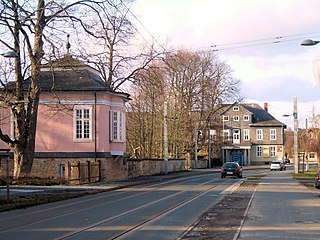
Stöckheim-Leiferde is a borough (Stadtbezirk) in the southern part of Braunschweig (Brunswick), Germany. The population of 8,460 (2020) lives mostly in single-family homes.

Hamburg-Mitte is one of the seven boroughs of Hamburg, Germany, covering most of the city's urban center. The quarters of Hamburg-Altstadt and Neustadt cover much of the city's historic core. In 2020 the population was 301,231.

Innenstadt is the central borough of the City of Cologne in Germany.
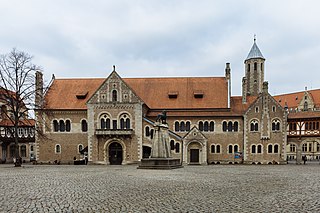
Dankwarderode Castle on the Burgplatz in Braunschweig (Brunswick) is a Saxon lowland castle. It was the residence of the Brunswick dukes for centuries and, today, is part of the Herzog Anton Ulrich Museum.

The Östliches Ringgebiet is a Stadtbezirk (borough) in the eastern part of Braunschweig, Germany. With a population of 26,559 (2020) it is the city's second most populous district.
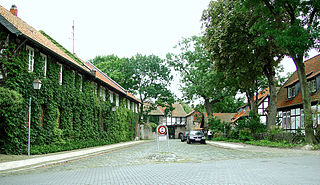
Wabe-Schunter-Beberbach is a Stadtbezirk (borough) in the north-eastern and eastern part of Braunschweig, Germany. The district is named after the river Schunter and its tributaries Wabe and Beberbach.
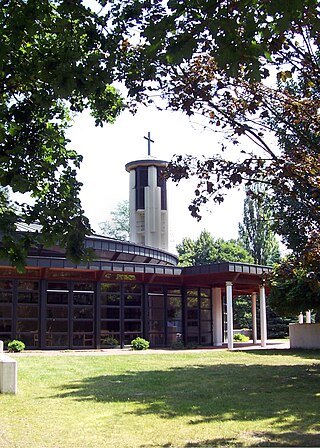
Heidberg-Melverode is a Stadtbezirk (borough) in the southern part of Braunschweig, Germany.

Hondelage is a Stadtbezirk (borough) on the river Schunter in the north-eastern part of Braunschweig, Germany.
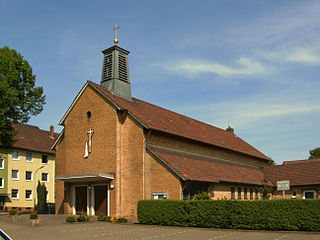
Rüningen is a Stadtbezirk (borough) on the river Oker in the southern part of Braunschweig, Germany.

The Innenstadt is the central district of the city of Osnabrück in Lower Saxony, Germany; its population is roughly 8,300.

The following is a timeline of the history of the city of Braunschweig (Brunswick), Germany.

Lehndorf-Watenbüttel is a Stadtbezirk (borough) in the northwestern part of Braunschweig, Germany. The Stadtbezirk comprises the quarters Kanzlerfeld, Lamme, Lehndorf, Ölper, Völkenrode, and Watenbüttel.

The Weststadt is a Stadtbezirk (borough) in the western part of Braunschweig, Germany. With a population of 23,298 (2020) it is the city's third most populous district.

Viewegsgarten-Bebelhof is a Stadtbezirk (borough) in the southern part of Braunschweig, Germany. The district has a population of 13,121 (2020).





































